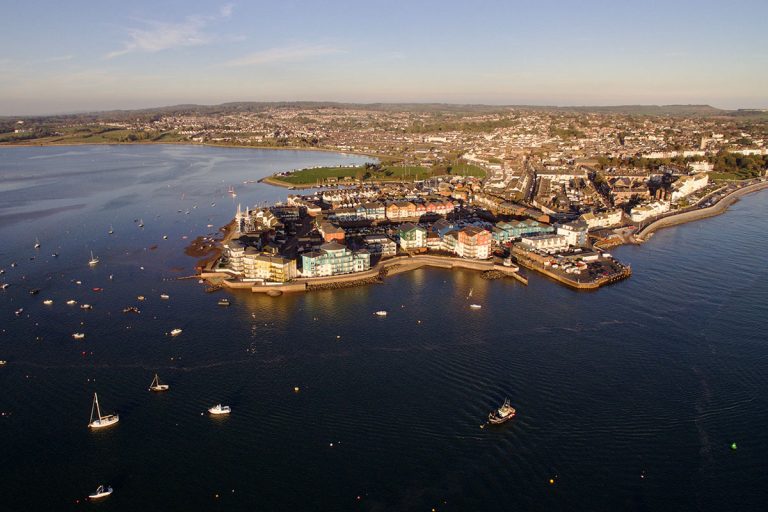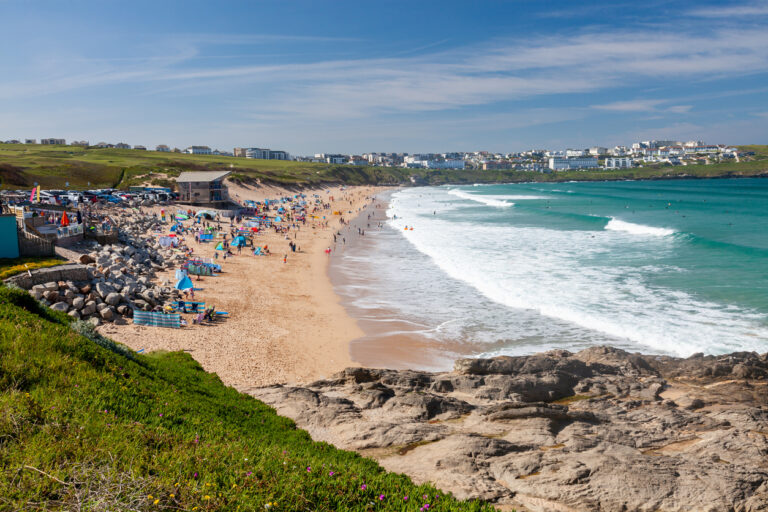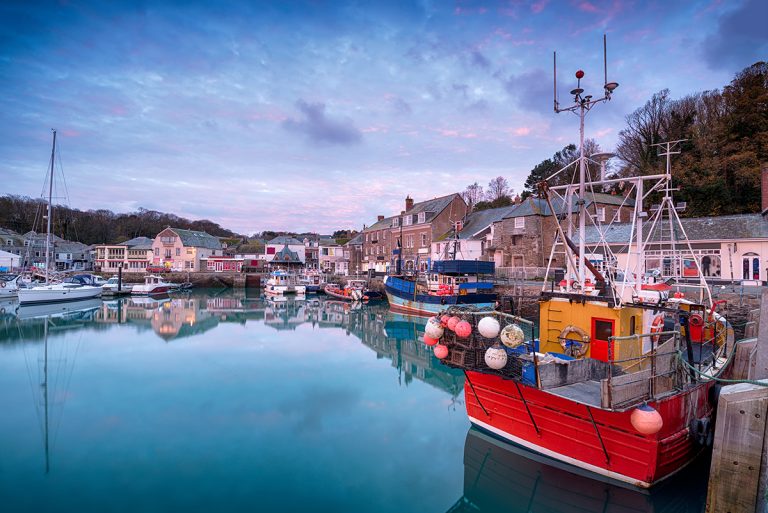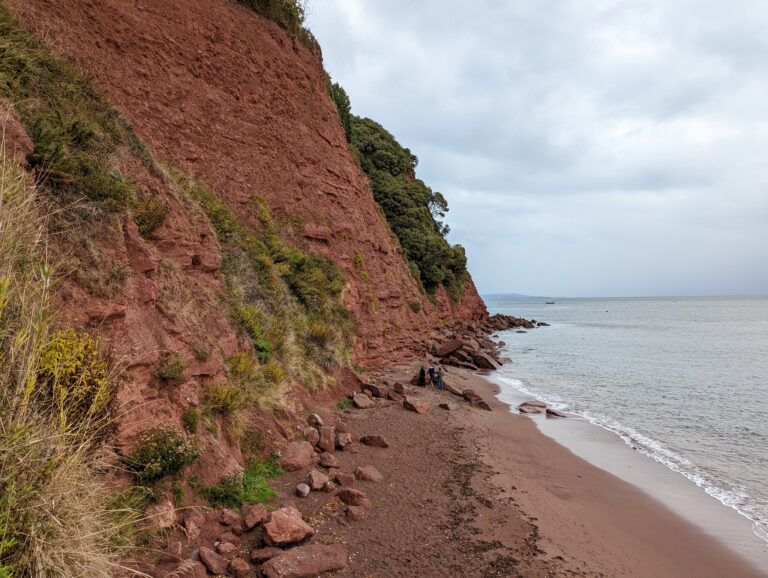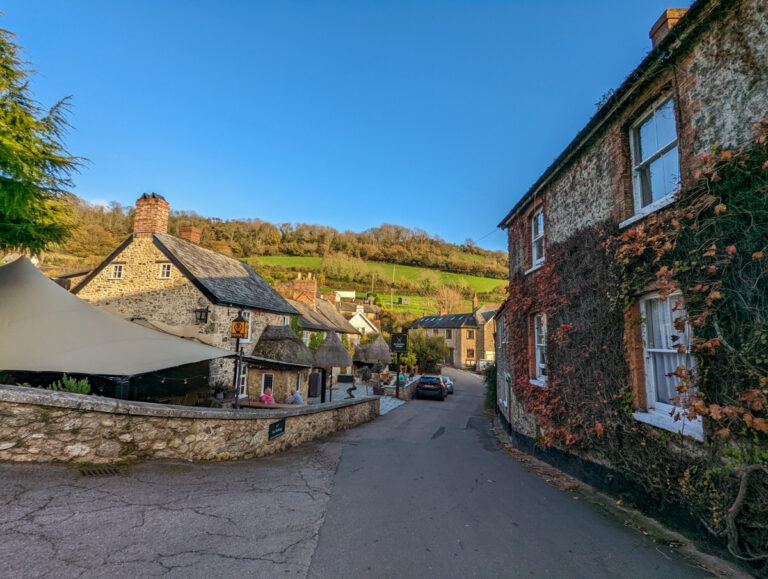Weekend in Exeter Itinerary: Perfect for all travellers!
If you’re thinking about spending a weekend in Exeter, this blog post is a really helpful guide!
Centuries of history? Check. Proximity to nature? Check. Delicious gastronomy? Check.
There are many, many reasons why Exeter is one of the best city break destinations in the UK.
But despite its plethora of incredible attractions for virtually every taste and budget, it is sometimes overshadowed by the spectacular nature of Devon and Cornwall, the world-famous Bath and the much larger city of Bristol.
But many people realise what Exeter has to offer. We’re talking about one of the country’s oldest civilisations, the narrowest street in the world, a house that literally moved, incredible watersports and a burgeoning food scene.
If you’re looking for a cosy city to spend a weekend in, look no further than beautiful Exeter.
About Exeter
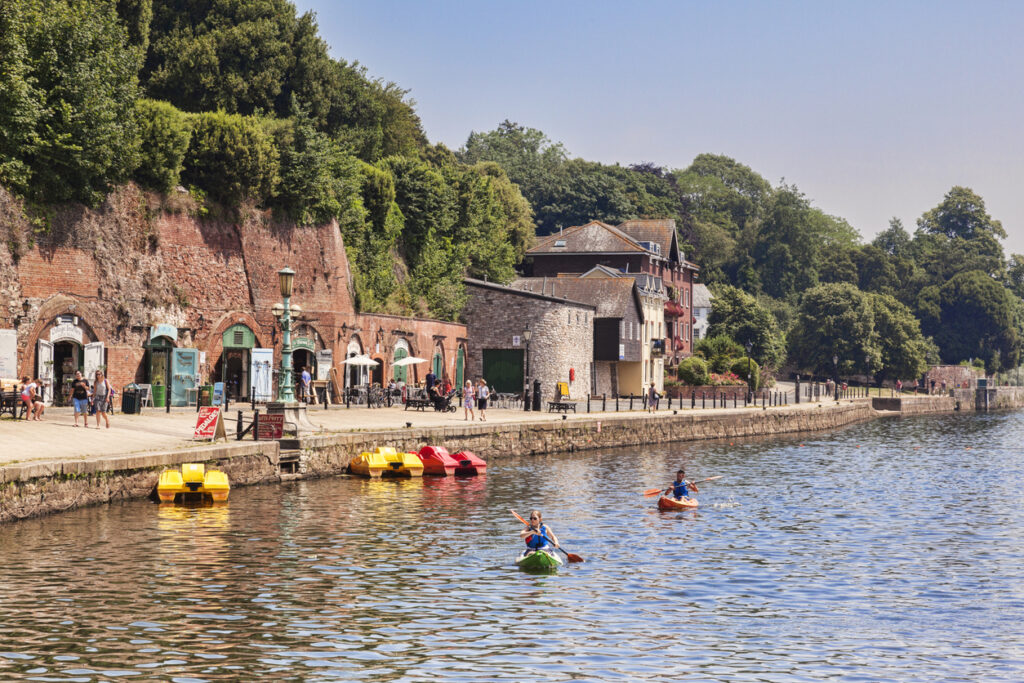
Perched on the start of the Exe Estuary, Exeter is one of the most historic cities in the UK.
It was a small Celtic settlement until 6000 Roman troops set up camp looking for gold, silver and iron in the UK.
Exeter has since prospered under different ages and monarchs.
Its crowning glory is its cathedral, finished in 1342 and one of the most majestic in England.
But that’s far from all this south west city offers – there’s plenty to get up to on your weekend in Exeter.
You’ll need around a day and a half to see all of the highlights, and of course, you could spend some time enjoying Exeter’s gastronomical and nightlife scenes.
Or, you could opt for one of the many day or half-day trips from Exeter and see more of Devon!
I’ve been on numerous trips to Exeter – and I’m actually just about to move to nearby Exmouth, where some of my family are from.
And now, I’m here to share the best way to spend a weekend in Exeter!
How to get to Exeter
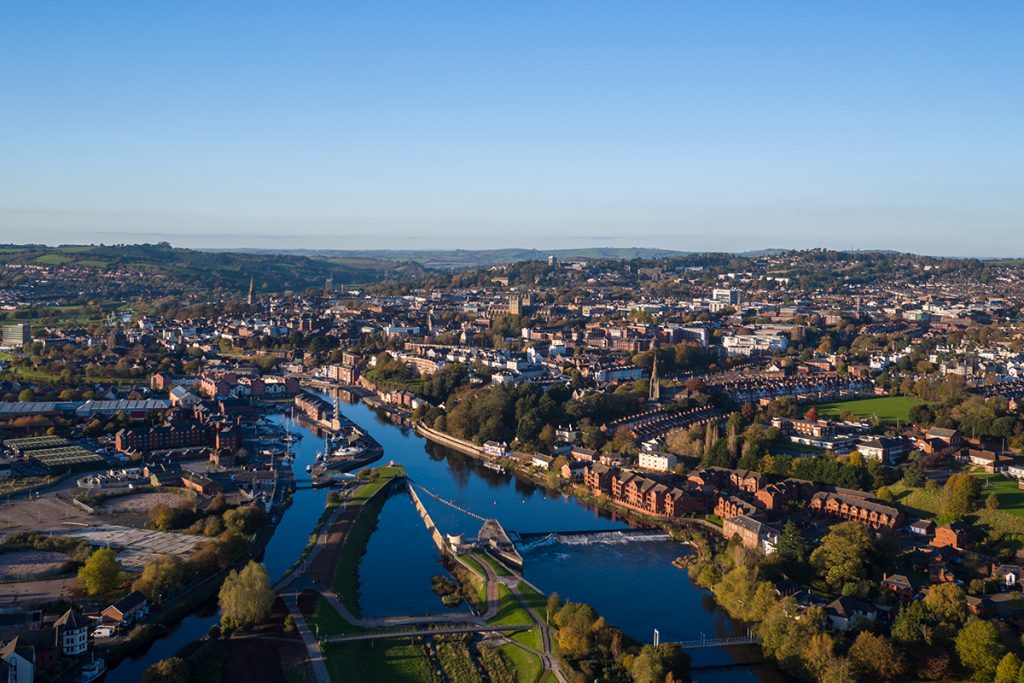
Exeter is located at the end of the M5, which connects to Bristol, Birmingham, the M4 (for London) and the M6 (for Manchester).
You can read my blog post on how to get to Devon for more information!
My favourite way of getting from London to Exeter is by train.
Exeter has two stations with trains going to London, Bristol, and other stations across the south. GWR connect Exeter with Bristol and London, and they only take 1 hour 30 (to Bristol) and 2 hours 10 (to London Paddington).
Plus, GWR are affordable and usually have modern, comfortable trains.
If you’re travelling to Exeter from the north, you will probably change trains at Bristol. (If you’ve got time, check out my weekend in Bristol itinerary too!).
You can use the National Rail website to research routes and book tickets.
Take a look at my GWR first-class review here.

Megabus and National Express also serve Exeter, again from London, Bristol, and some other major cities.
Where to stay in Exeter
Budget Hotel: The White Hart offers cosy en-suite pub rooms and friendly service, with breakfast served each morning and food able to be purchased from the pub at any time. It’s located right by the cathedral. Click here for more information.
Mid-Range Hotel: The Jury’s Inn is in a prime location near Exeter Cathedral in the city centre. Bedrooms are modern and stylish, with brilliant white bedlinen and colourful furniture. There is a restaurant and bar on site. Click here for more information.

Luxury: Headweir Mill House Hotel is located, as the name suggests, in a converted mill house. This 200 year old property is a short walk from Exeter quay and Exeter Cathedral (up a short but steep road). The rooms are boutique-style, with sophisticated coloured scheme and a fusion of period and modern decor. Enjoy a restaurant and bar on site. Click here to read more.
How to Get Around Exeter
- Exeter is a small city, and it’s very walkable. There are buses connecting some areas of the city, and there is a hill from the Quayside area to the Cathedral.
- You can use a contactless card to pay on buses.
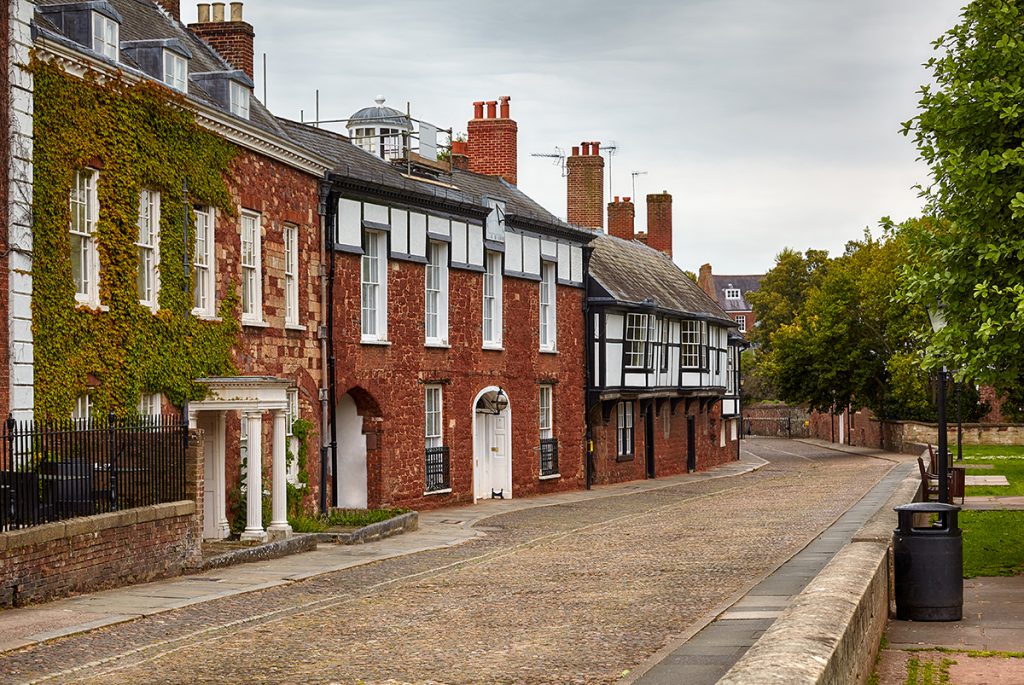
Where to park in Exeter
If parking is not included in your accommodation, I found a great car park that is only £3.50 for all-day parking on my last trip.
Put Haven Banks Car Park (Google maps location here) in your Sat Nav and follow the directions.
Don’t park in this car park, however – follow the road to the end and you’ll reach a long stay car park. Here it is significantly cheaper!
There’s also a park and ride service available in Exeter.
Weekend in Exeter Day One
Exeter Cathedral
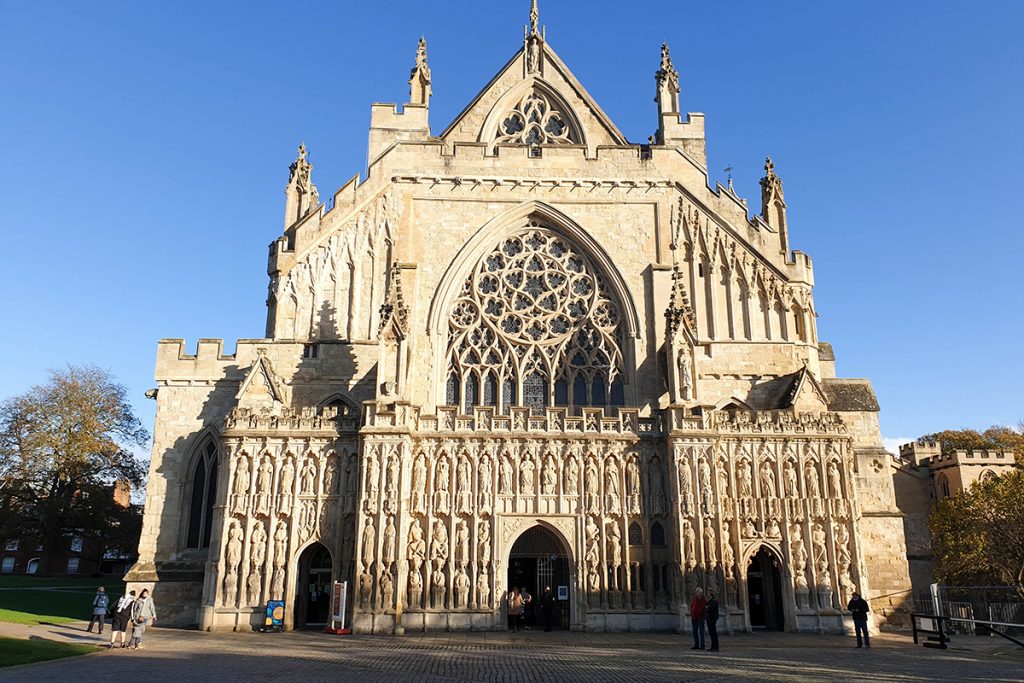
Exeter Cathedral is one of the most beautiful in the country, and it is proud to have the longest uninterrupted Medieval Gothic vaulting in the world!
A Norman cathedral was built on this site in 1113 AD, but after the consecration of Salisbury Cathedral, Exeter got jealous and decided to pretty much tear down their existing Cathedral and build another. This one was finished in 1342.
From the outside, you’ll be able to see rows of figures – people, saints, and angels.
These have been carved over the years, with a 200 year gap between the oldest carvings and youngest. The reason for this gap? The Black Death kept interrupting the stonemason’s work.
Also outside are grotesques. These are similar to gargoyles, but there’s one main difference – gargoyles spit water, while grotesques do not.
Some were designed by the stonemasons themselves, including a recent addition of a pipe-smoking dog, based on a real-life dog who could smoke a pipe called Butch.
Inside the cathedral are several small chapels, stained glass windows, a medieval clock, a minstrels gallery, and tombs. It costs £5 to enter, but it’s well worth it.
See my guide to Exeter Cathedral here.
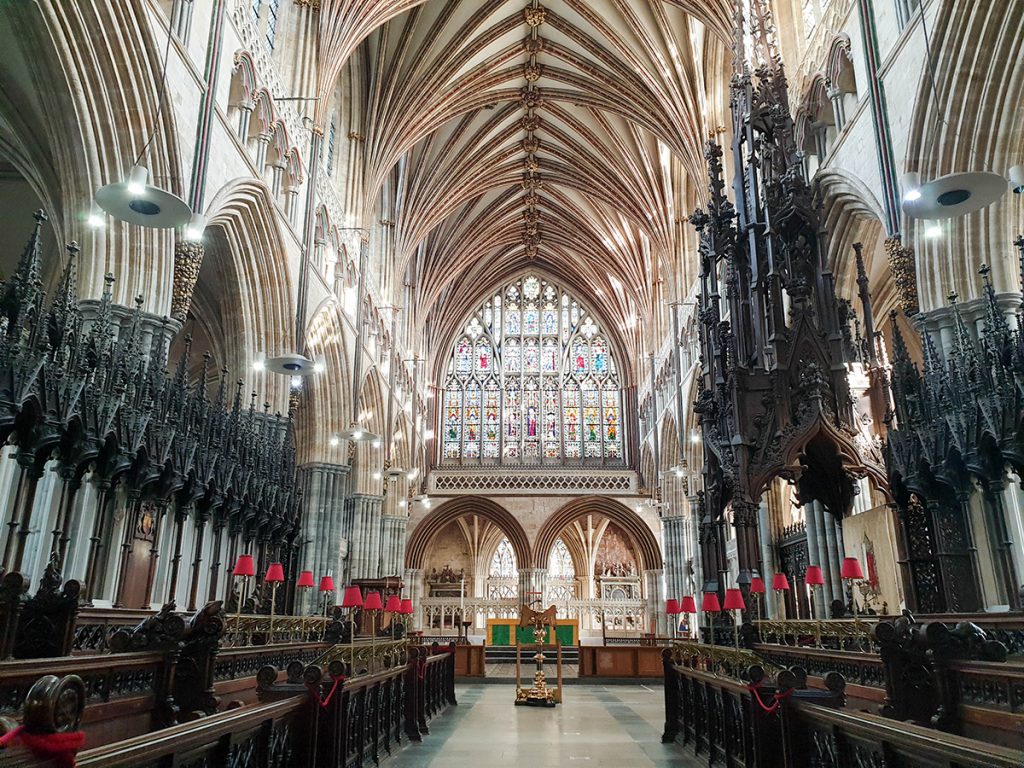
Red Coat Tour
To learn about all of Exeter’s fascinating history, I recommend doing a Red Coat Tour.
The theme of the tour changes depending on what day it is, so you might even want to do two during your weekend in Exeter!
These tours are completely free – run by people who are passionate about the city and volunteer to give tourists some background (but of course tips are appreciated).
Click here to see what times tours leave and for more information.
Custom House Visitor Centre
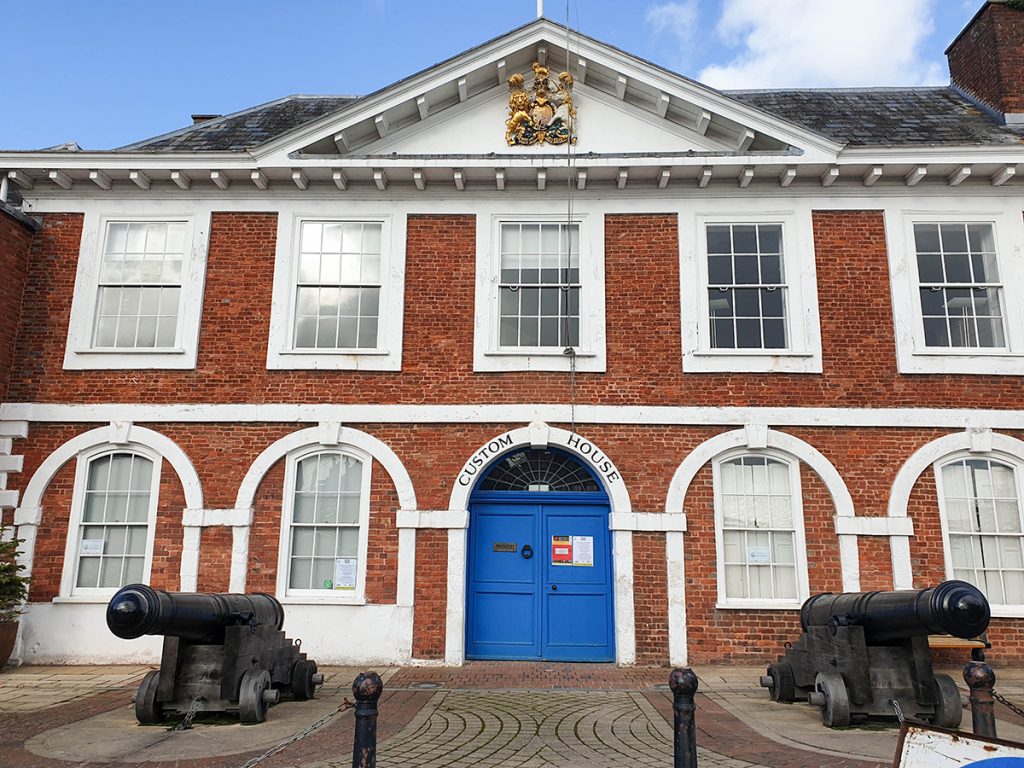
If your red coat tour ends at the quay, it’s worth checking out The Customs House (if it doesn’t, save this entry for the next day!).
The Custom House Visitor Centre was built in response to the rise of Exeter’s Woollen Cloth industry and its transportation from the quayside, down the River Exe, and to various ports all over the country and world.
While the quay has existed since Roman times, it was blocked to the sea in the late 1200s because a certain Isabella de Fortibus, the Countess of Devon, built a weir across the River Exe to power her mills in nearby Topsham.
This weir also blocked ships getting to Exeter in the hope that it would boost her merchant business. It was blocked again in 1317 by another weir built by Hugh de Courtenay – Isabella’s cousin.
Exeter was blocked from the sea for 250 years until the city dwellers eventually managed to persuade Henry VIII and subsequently Edward VI that it was necessary for Exeter to have access to the sea (the Tudors had an ongoing feud with the de Fortibus and de Courtenay predecessors, which made them more inclined to side with the townspeople).
Due to the years of blockage, the river wasn’t naturally accessible.
Therefore, John Trew was commissioned to build canals linking the quay to the natural river.
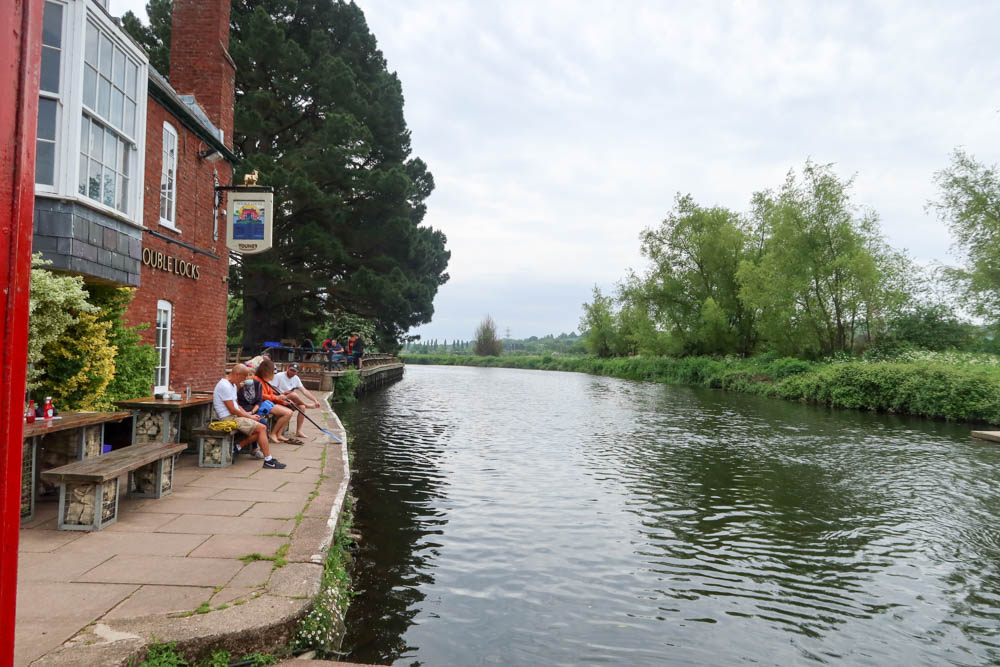
Once this was established, the woollen cloth industry thrived, with the Customs House being built in 1680.
You can enter the historic building and marvel at its historic staircase and plaster ceiling, and there is also an exhibition all about Exeter’s history.
The visitor centre is also here, with a gift shop selling local crafts and tourist information.
Lunch by the Cathedral
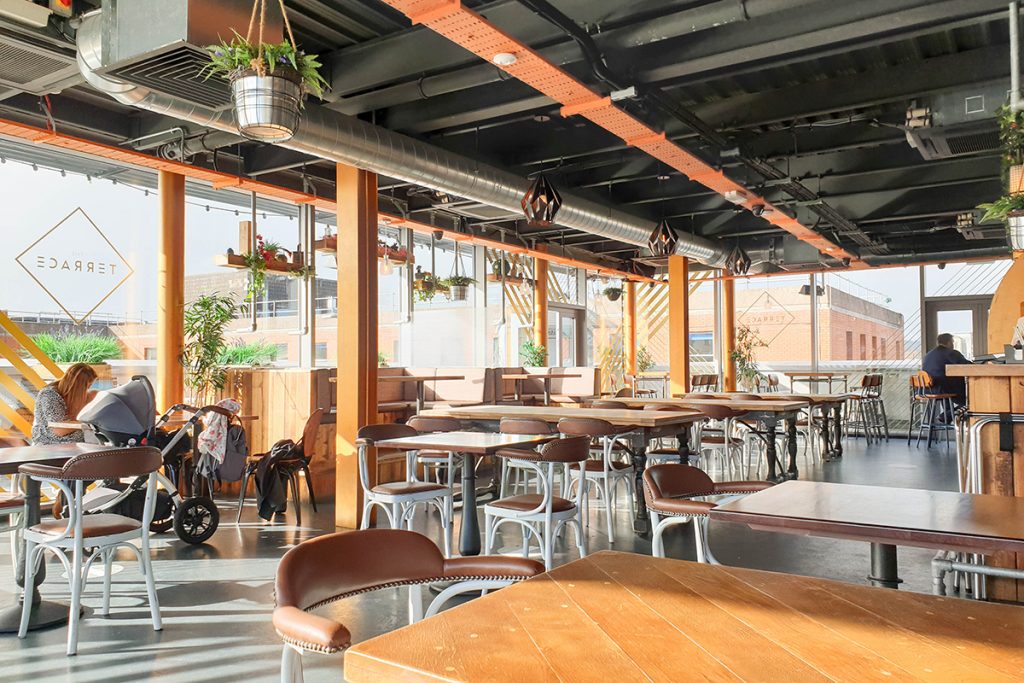
Walk back up to the cathedral area for lunch. There are a few options here:
- The Terrace is a rooftop restaurant with a great lunch and dinner menu (it’s a popular place for bottomless brunches, so book ahead if you’re there on a Saturday!). See my full review of The Terrace here.
- Eat on the Green is right by the cathedral and is more cafe-style, but serves up delicious open sandwich amongst other delightful dishes!
- I’ve never been, but I’ve heard very good things about the vegetarian restaurant The Plant Cafe.
Gandy Street and Fore Street
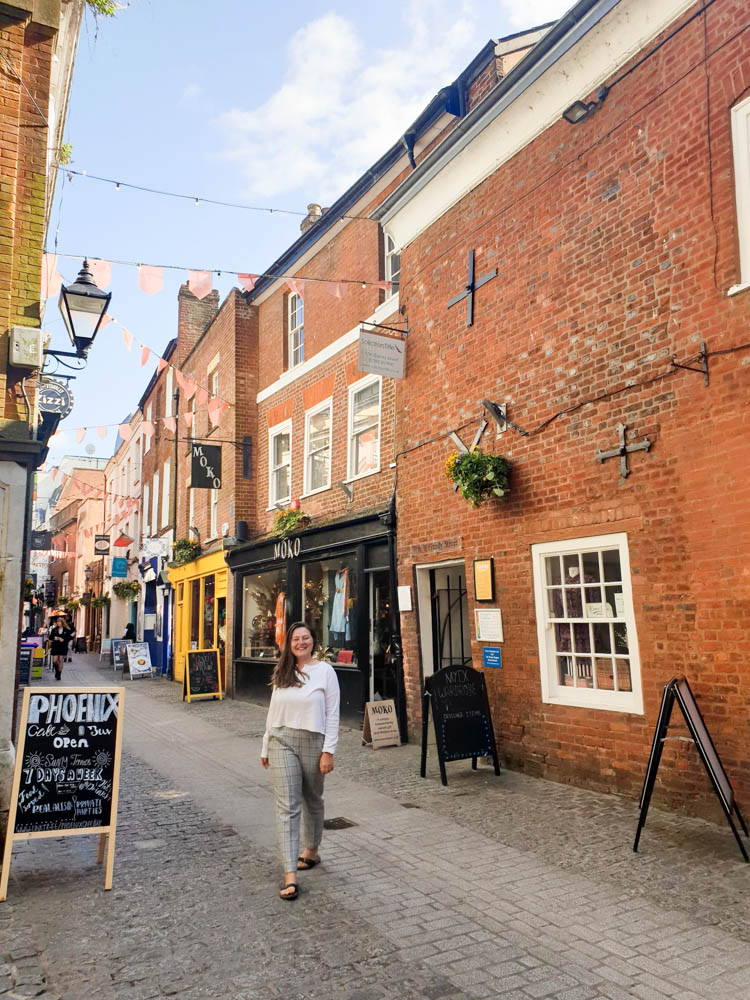
Exeter has a busy shopping precinct, but Gandy Street and Fore Street are the areas where you’re most likely to find some souvenirs from small independent stores.
Gandy Street is a quaint cobbled road, and is said to have been a source of inspiration for Harry Potter’s Diagon Alley.
Fore Street is part of Exeter’s Independent Quarter and has plenty of shops and restaurants to try out!
The Royal Albert Memorial Museum
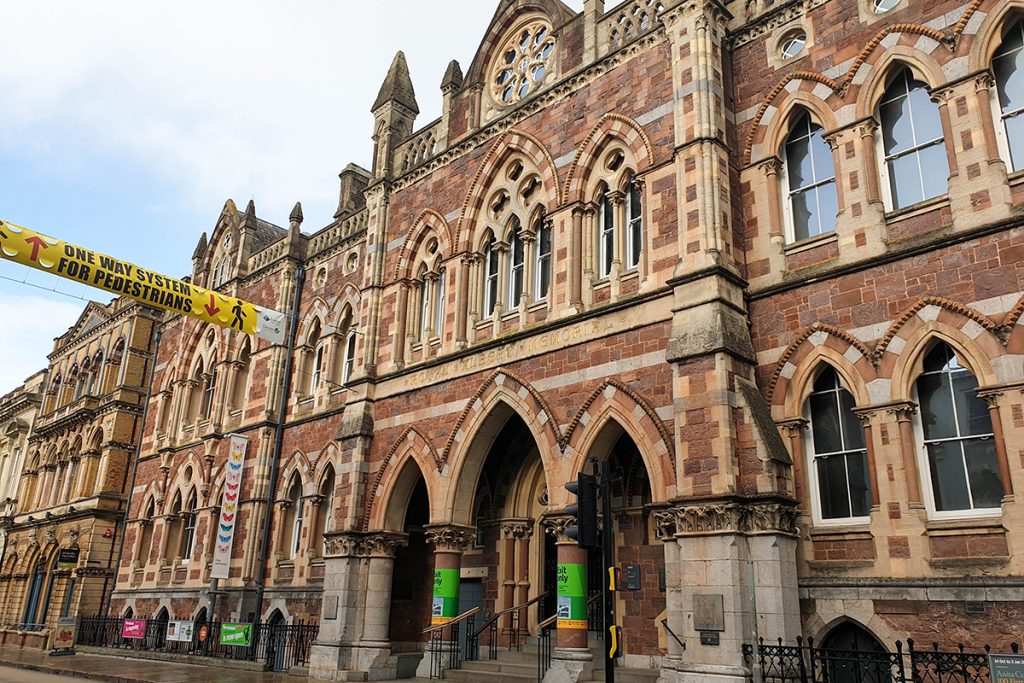
The Royal Albert Memorial Museum has a strong focus on the story of the city and county, but also has exhibitions about global cultures and nature across the world.
You can stick to the Exeter and Devon exhibitions if that’s your main interest, but also on offer are exhibitions about Ancient Egyptians, African Animals, and natural sciences.
Entry to the RAMM museum is free, and it is open Tuesday – Sunday 10am-5pm.
Sightseeing in Exeter
If your tour didn’t include them, make sure you check out some of the most interesting parts of Exeter. These include:
- The House that Moved
- The World’s Narrowest Street
- The City Walls
- The Touch Stone
The House That Moved
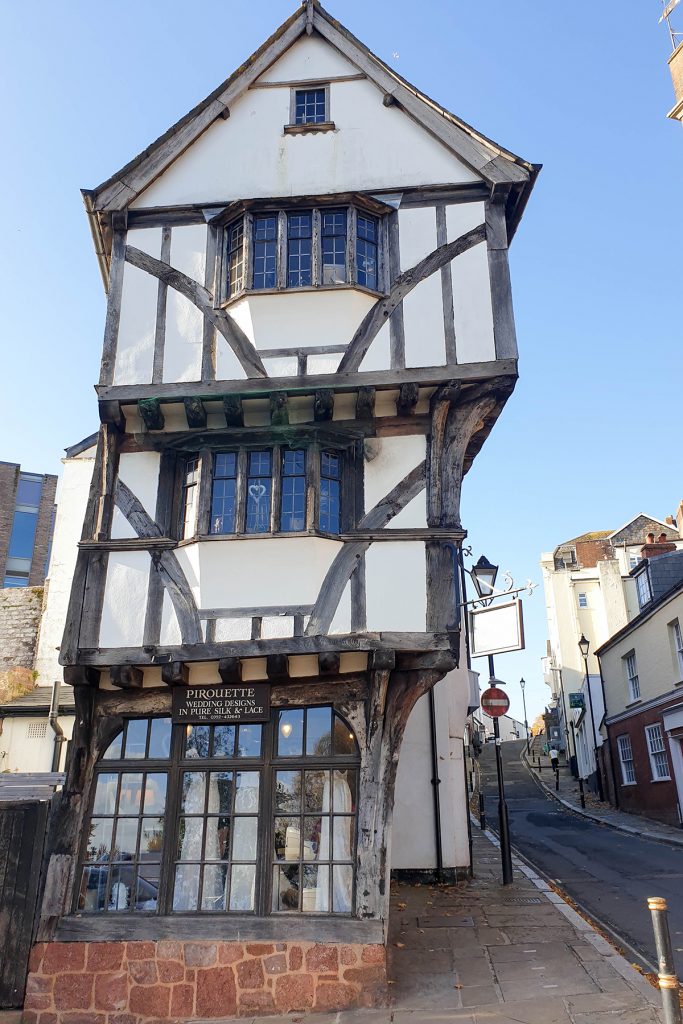
The House that Moved is one of my favourite parts of Exeter. Sitting at the bottom of Stepcote Hill, a steep lane with medieval houses on either side, this house (now a Bridal shop) quite literally was moved.
The council raised it by a few inches, placed tracks underneath and moved it to its current position, to allow the house to be preserved while still being able to build a road through the city centre!
It kind of looks like it might fall down, but it’s a sight worth seeing!
The Country’s Narrowest Street

Online it says that this is the country’s narrowest, but a sign at the end of Parliament Street advises that this is supposedly the world’s narrowest.
It’s not an alleyway because it has buildings with the address “Parliament Street”.
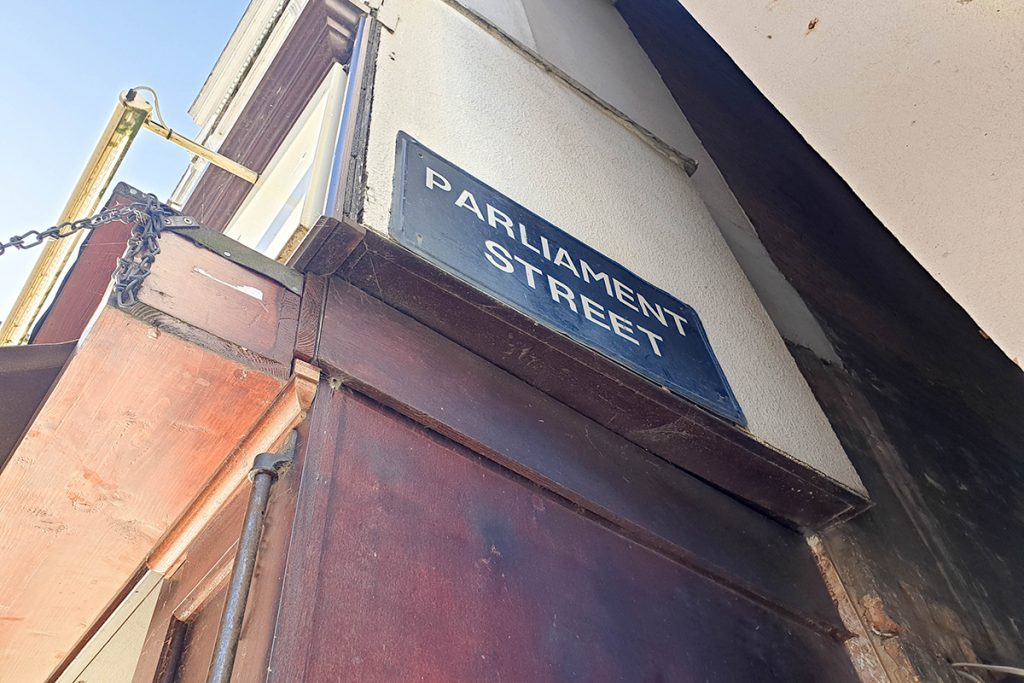
Watch out when you come out of Parliament Street – often people walk down the adjacent roads really quickly and don’t expect to see other people emerging from seemingly out of nowhere!
See my guide to Parliament Street here.
The Exeter City Walls
Your walking tour will probably include these in some form, but I thought I’d include them just in case!
The City Walls were first built by the Romans and added on gradually throughout the next few years. But eventually, the city expanded out of the walls and they are no longer in use.
There have been reports that they are at risk, but they are protected.
Just outside the walls, near the cathedral, you’ll come to Southernhay.
Hay is a Saxon word for open space, and in Medieval times, people would come out here on summer days when the smell of sewage in the city was too potent!
On a more sombre note, it was also where people were burned at the stake!
The Touchstone
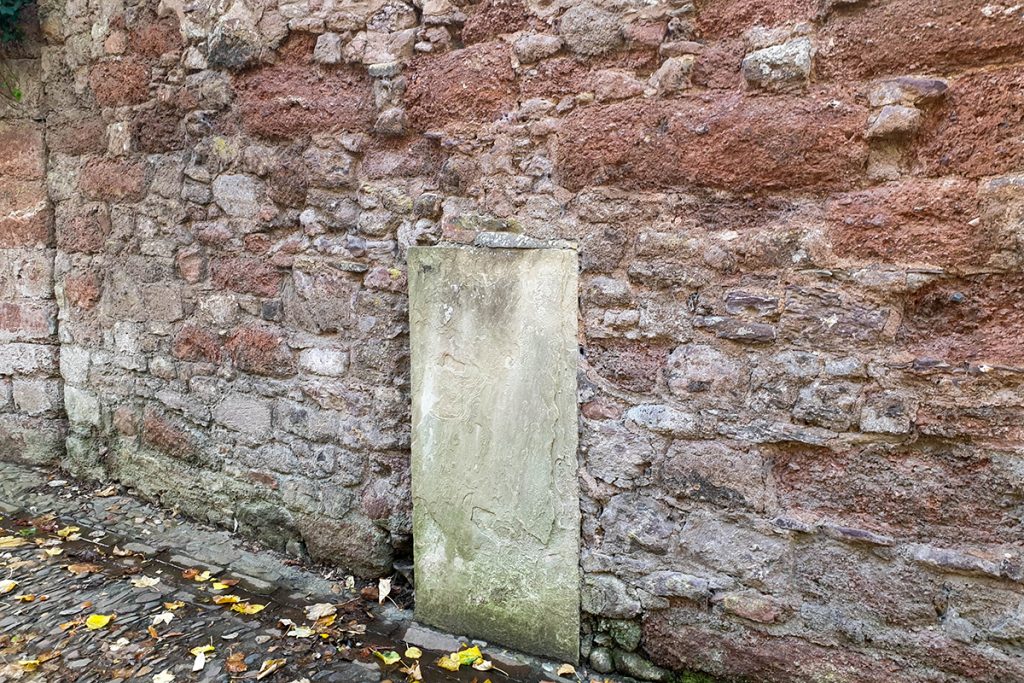
On the city wall exit near the cathedral (google maps location) there is a large slab in the wall.
This is a touchstone – in Medieval Exeter, people used to touch it on their way back into the city after being away, and it would absorb all of the evil spirits from the places they had visited.
If they touched it on the way out, however, they would bring bad spirits on their journey with them!
Rugby in Exeter

Are you more into sports than history?
You could spend your Saturday afternoon at the Exeter rugby.
Playing at Sandy Gate Stadium, Exeter has two incredible teams.
The men’s team has won the top four rugby tournaments and various other cups.
The women’s team came second in the Premier 15s in 2022, just two years after the team was formed.
There are plenty of Exeter rugby fans who go every week, so you’re guaranteed to have a fantastic atmosphere.
Read more about Exeter Rugby here!
Dinner in Exeter
For dinner, try out one of Exeter’s restaurants. Some ideas are:
- Margoux: Serving British and European classics in a modern atmosphere.
- Rockfish: Exeter’s premier fish restaurant, this is a must-visit if you want to taste some of Devon’s best seafood.
- The Turk’s Head: One of the oldest pubs in Devon, this eatery was one of Charles Dickens’ favourites and serves tasty pizza.
You can see Go South West’s top pick of the best restaurants in Exeter here.
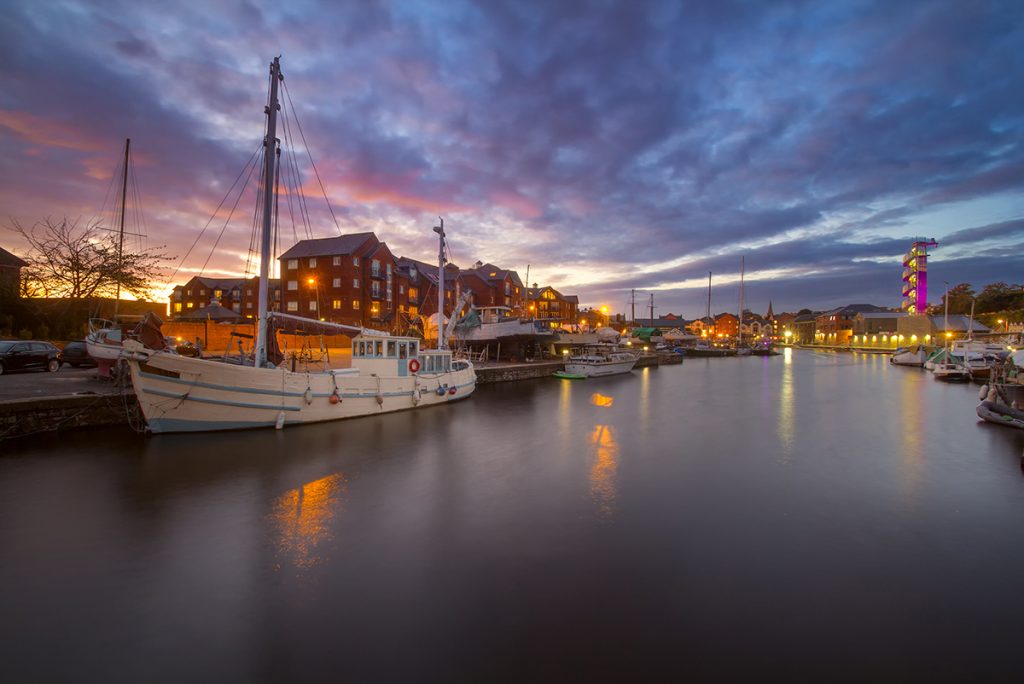
Check out my YouTube video about how to spend a day in Exeter!
Weekend in Exeter Day Two
Exeter’s Underground Passages
Exeter’s Underground Passages are one of the must-dos in the city.
They are the only tunnels of this kind that are in operation in Britain; they were built in Medieval times to bring drinking water into the city.
A guided tour goes around all of these spooky tunnels, and tells some stories about Exeter’s medieval past!
If you want to do something a little more adventurous, but still learn about Exeter’s history, then visiting these tunnels is a must-do.
It costs £7.50 for adults, £5.00 for a child, and £22.00 for a family to visit the tunnels.
They may not be suitable for small children or people who suffer with claustrophobia.
Watersports on Exeter quay

If you’re visiting Exeter during the summer months, take to the water!
You can rent canoes, kayaks or SUPs with Saddles & Paddles on the quayside and explore Exeter Canal.
You can paddle all the way down to the Double Locks pub, where you can enjoy a coffee or drink before heading back to the quay.
Read more about canoeing in Exeter here!
Don’t fancy taking to the water? You can also rent a bike from Saddles & Paddles and head down to Topsham.
Lunch at the Quay
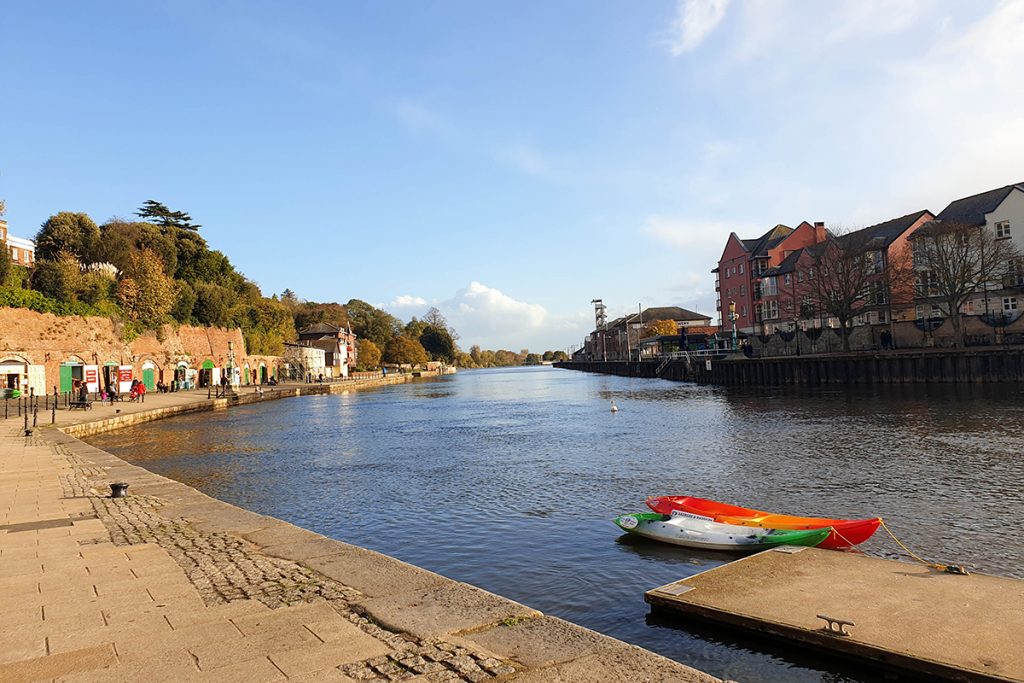
If you didn’t make it to Rockfish the previous night, now is your chance – it’s right by the quay!
On The Waterfront serves up pizza and burgers right by the quay, and has some beautiful views over the area.
You could also try The Prospect, an authentic pub right next door.
Or, if you fancy some drinks with lunch, head to Exeter Quayside Distillery. They offer guided tours every Saturday, but their bar and restaurant, which serves delicious cocktails using their own gin, is open every day.

Read more about Exeter Quayside Distillery here.
St Sidwell’s Point spa

Fancy relaxing after a busy weekend?
I’ve got the perfect place.
St Sidwell’s Point spa is a new health centre in Exeter.
It’s the UK’s first Passivhaus spa, a German concept that keeps heat and energy in, protecting the environment and saving loads of money!
The spa is small but incredibly relaxing, with a sauna, steam room, jacuzzi and sanarium.
And it only costs £20 to use the facilities for two hours!
Read more about St Sidwell’s Point Spa here.
Powderham Castle
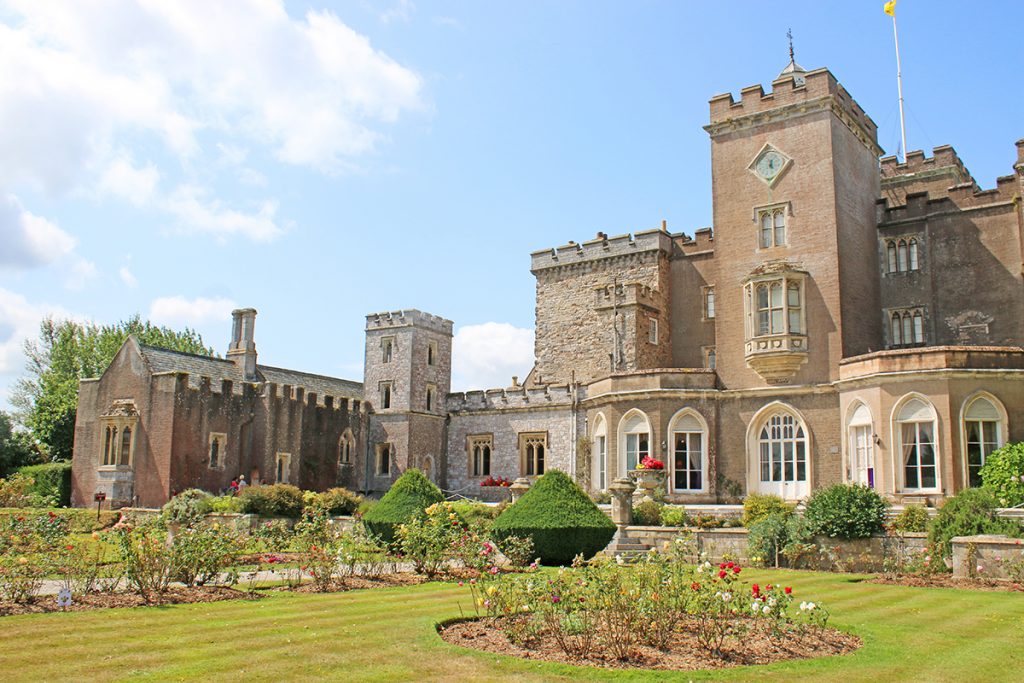
Twenty minutes from Exeter is Powderham Castle, home to the Courtenay family (the ones who built the Weir!).
It’s 600 years old, and was the site of various sieges in the Civil War, with features from various periods. You can do guided tours around the castle and enjoy the grounds.
Dawlish Warren/ Exmouth
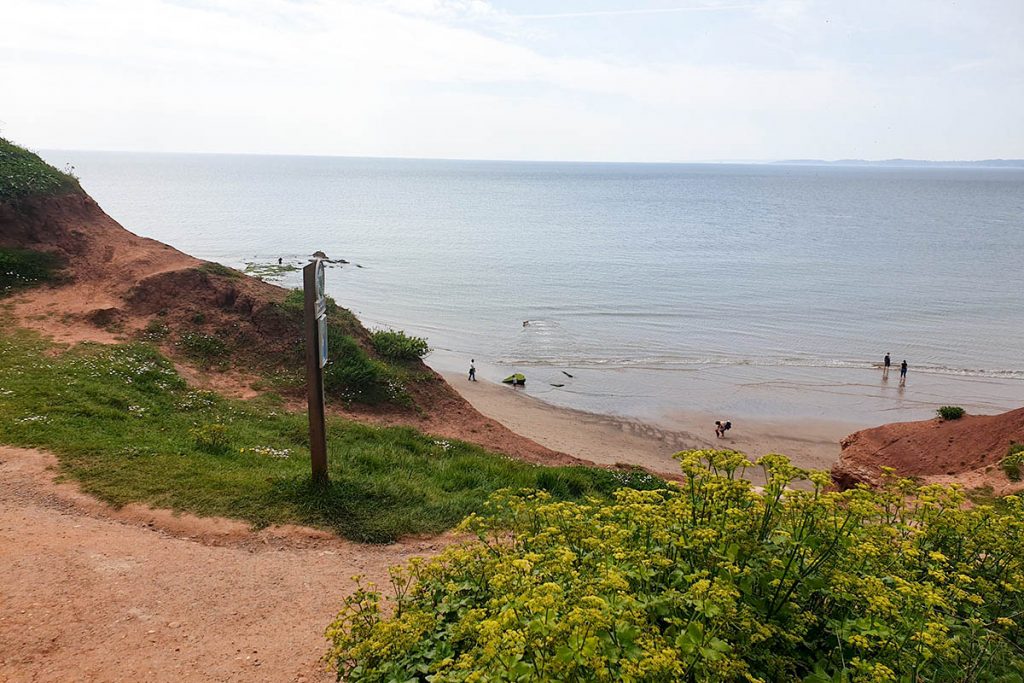
These are the nearest beaches to Exeter.
Dawlish Warren is much closer to Powderham Castle than Exmouth – to reach Exmouth you’ll have to backtrack to Exeter – but there are quite a few more things to do in Exmouth – so many that you might want to extend this weekend in Exeter itinerary 😉
If you want to check out some of the world-famous Jurassic Coast and explore the Exe Estuary, it might even be worth making Exmouth a full-day or half day trip on its own.
Where to go from Exeter
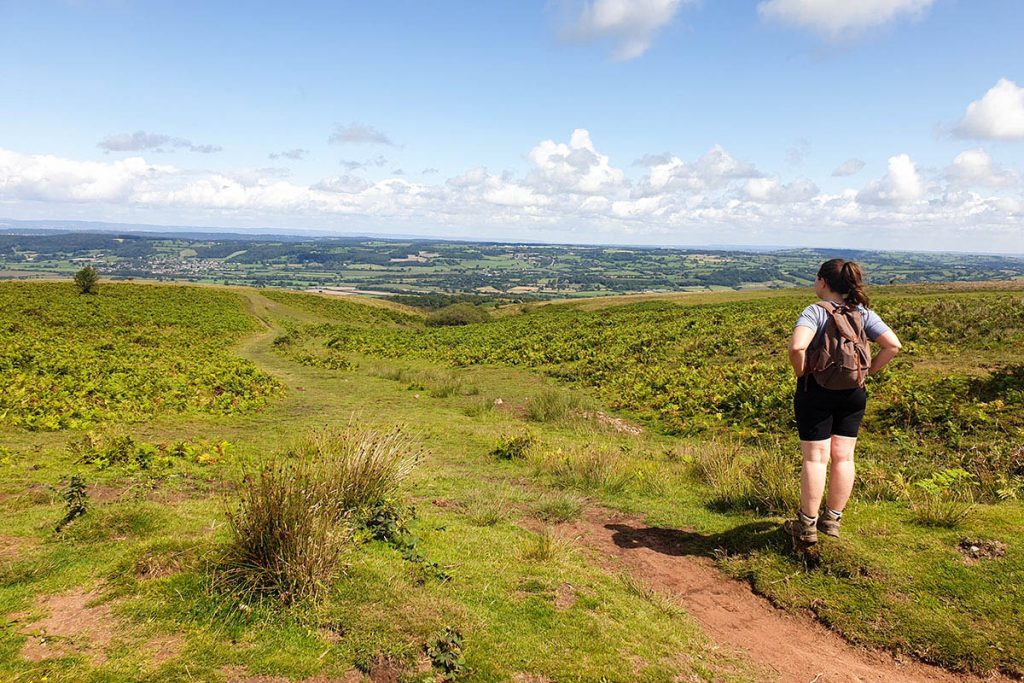
While Exeter is nearly at the south western end of the country, there are plenty of places to visit nearby!
- The most obvious recommendation is Exmouth and the Jurassic Coast. This stretches all the way to near Bournemouth in Dorset.
- Or, venture deeper into Devon and check out the English Riviera towns of Torquay, Paignton, Babbacombe and Brixham. Further on is Plymouth – then there’s all of Cornwall waiting for you!
- You’re about an hour and a half from North Devon too, which is home to more beautiful spots including beaches and Exmoor National Park.
- You could drive a bit further up the M5 to Taunton, and explore the Quantocks, or eventually reach Somerset’s Mendips, Cheddar Gorge and coastline. You’ll eventually reach Bristol if you keep driving on this route.
I hope that this guide has proved useful! If you have any questions, let me know in the comments 🙂

